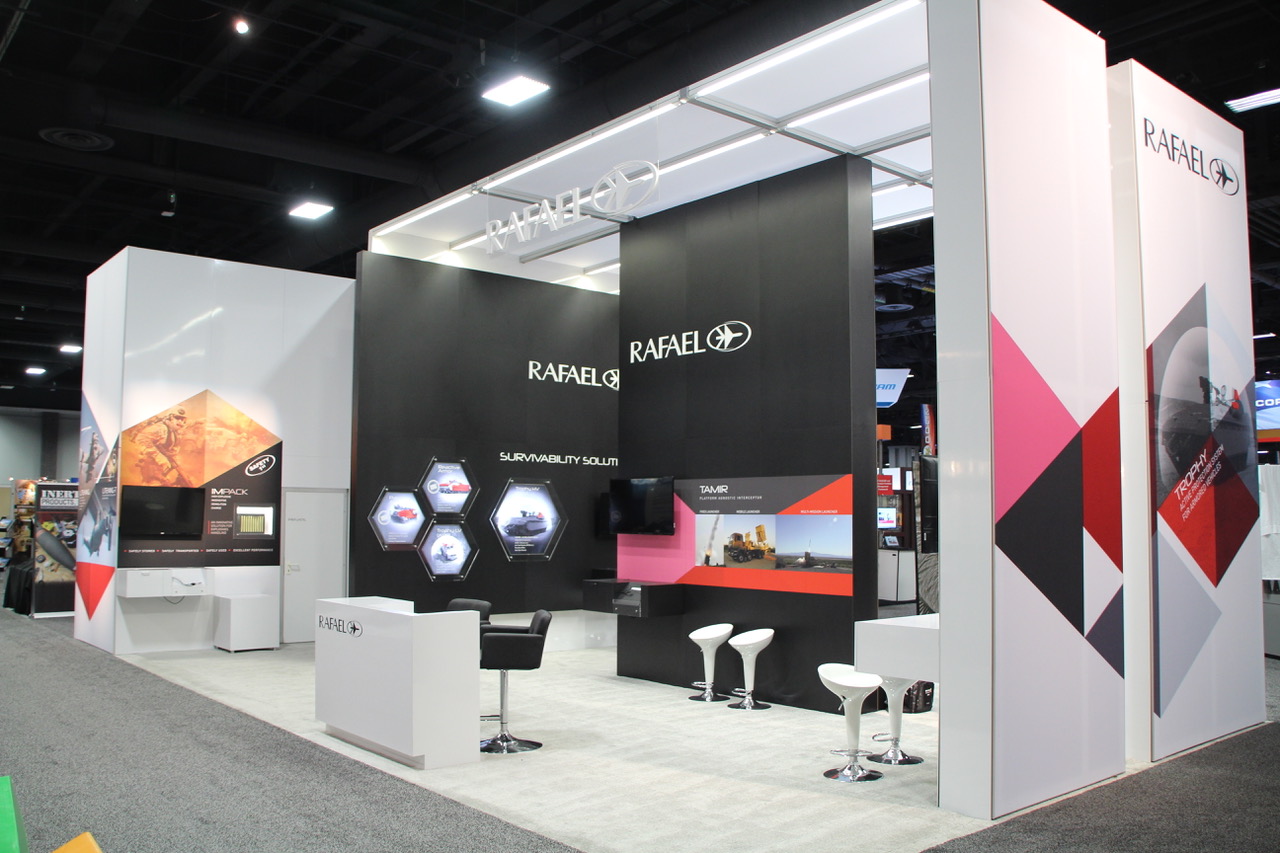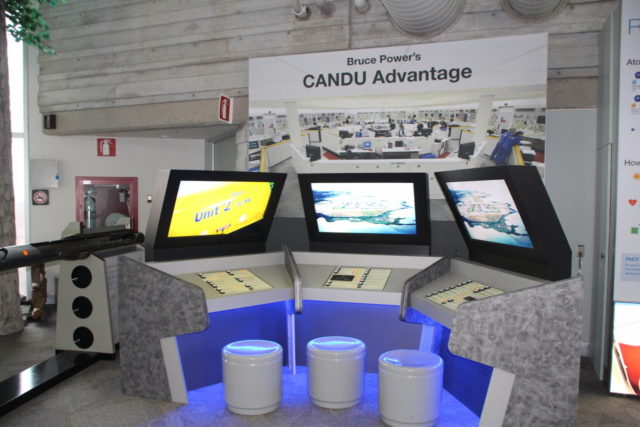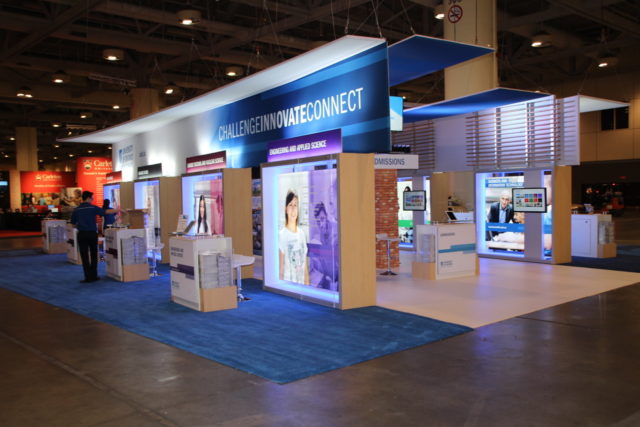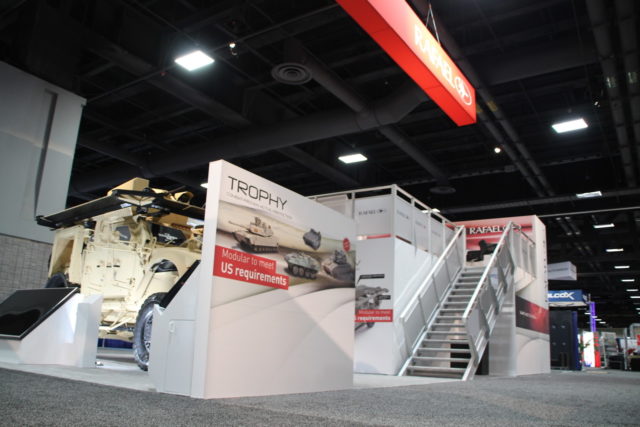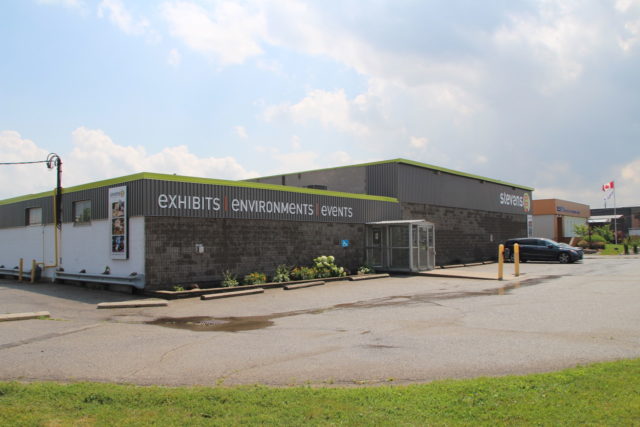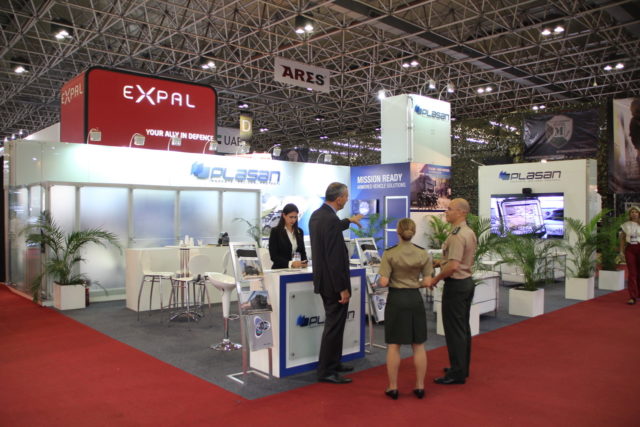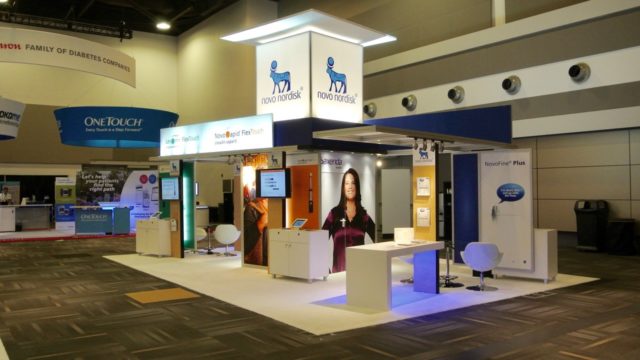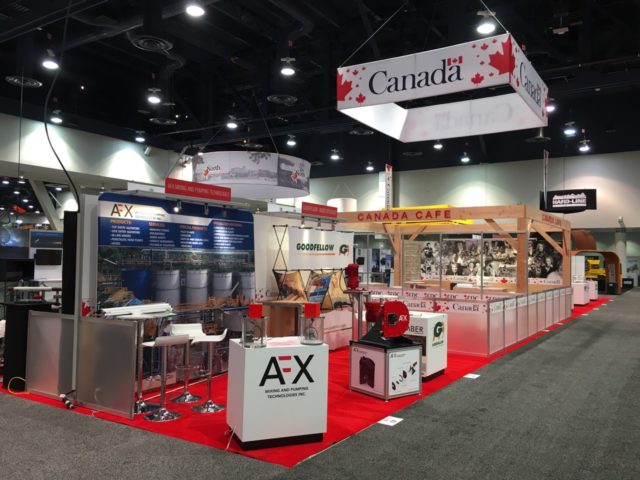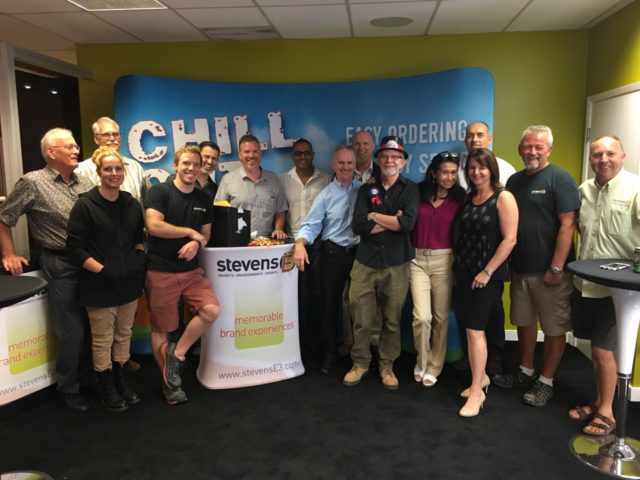-
Headquarters -
2101 Oxford Street E, London, Ontario, N5V 2Z7
-
Year established -
1927
-
NAICS -
337215 - Showcase, partition, shelving and locker manufacturing
-
Major expansions -
N/A
-
Employees -
25
-
Exports -
US, Mexico, EU, Asia-Pacific
-
Download -
StevensE3
stevensE3 designs and builds innovative exhibits, environments and events by providing insightful design and using the latest technology to produce high impact, award winning solutions.
Located in London Ontario, stevensE3 celebrated its 90th anniversary in 2017, offering a perfect example of how a small family business can become a globally recognized brand. Established by H.A. “Archie” Stevens in 1927 as Stevens Signs, the company first operated out of a garage on Princess Avenue, London. After great success in the London area and a series of expansions, Archie’s son, Doug Stevens, became company president in 1971, when Stevens E3 began to design roadshow exhibits in addition to its signage work. Current president and chief executive officer Cam Stevens joined the family business in the 1980s, at which time the company, still lead by its second generation, expanded its technology capabilities with the introduction of ultraviolet screen-printing. As the exhibit design and manufacturing side of the business continued to grow in the 1990s, a new division was formed to focus purely on exhibits, and these eventually became the firm’s primary purpose. Today, only about 5 per cent of stevensE3’s revenue comes from its signage services.
Despite the expansion of the company, stevensE3’s mission remains simple: “Help our clients retain and generate new clients.”
Accordingly, its business ranges from very small projects to very large ones—from printing signs for local London firms to building 4,500-square-foot booths for multinational organizations and governments. Yet maintaining a close-knit family atmosphere is still central to stevensE3. Aside from the fact that the company has been passed down through the Stevens family itself, many other family connections also run through it; for example, the front desk administrator is married to a member of the design team.
According to Cam, building exhibits is a “prototype industry,” meaning that every exhibit that stevensE3 produces is newly designed and built according to a particular client’s needs. All exhibits are built in house at two closely located facilities in London, and then shipped to the location of the event and reassembled on site. Any signage, furniture, and audiovisual systems associated with the exhibit are also provided and installed by stevensE3, offering customers an easy, worry-free solution for their exhibit needs.
Given that the company provides a wide variety of services, stevensE3’s staff includes a diverse range of skillsets. It employs over 25 full-time staff, including carpenters/computer numerical control operators, administrators, salespeople, project managers, and onsite technicians. In addition, stevensE3 takes on contract workers for large projects or in times of high demand, which can bring its headcount to upwards of 70 employees. Cam expresses a great deal of respect for his staff members and their tenacity, as their jobs often involve long hours, travel and tight deadlines. In spite of these demands, employee retention is extremely high at the company, with many employees remaining at stevensE3 for over 20 years. Cam believes that at least part of this retention can be attributed to the firm’s warm, supportive family atmosphere.
stevensE3’s clients come from many different industries, such as agribusiness, defence, technology, pharmaceuticals, higher education, medical devices and others. Both provincial governments and the Government of Canada are customers, as well as many international governments. This heterogeneity is strategic rather than coincidental. Because an industry’s demand for exhibit services fluctuates greatly based on how well that industry is performing economically, Cam actively seeks to diversify his company’s customer base, thinking of the sales pipeline to be much like a “stock portfolio” with some areas stronger than others depending on current market conditions.
Similarly, stevensE3 is highly globally integrated, with more than 35 per cent of its sales coming from international clients. In particular, the firm is highly involved with businesses in China, the European Union, and the United States. To better serve its international customers, the company has sales offices located in Cologne, Germany, and in Las Vegas, Nevada — two of the world’s biggest destinations for trade shows and industry events.
Cam states that one of the most important things he has discovered over the course of his leadership is that “people tend to do business with people they know.”
As such, stevensE3 works to maintain its excellent reputation amongst its existing clients and global partners so that they are likely to recommend the company to other businesses. Cam himself is also well known internationally, having been the past president and a 14-year board member of the Experiential Designers and Producers Association. Further, he sits on the board for the Brussel’s based International Federation of Exhibition and Event Services (IFES) trade association. Overall, this “cross-pollination” between current and prospective clients via positive word of mouth is one of the integral factors in stevensE3’s ongoing success and growth.
stevensE3 does not invest in research and development in the traditional sense, but Cam notes that the company continuously works to make existing processes more efficient in terms of money, time, and materials. Moreover, due to the prototype nature of the firm’s work, there are ample opportunities to learn from previous projects and incorporate more efficient solutions with each new exhibit built. stevensE3 also tries to reduce its environmental impact by using as many green and recyclable materials as possible, alongside efforts to track and limit its carbon dioxide emissions.
A global leader in its industry, stevensE3 possesses many competitive advantages. First, the company has a unique ability to cater to clients of all sizes, both domestically and internationally. Second, by providing most auxiliary services in house (including audio/video, sign printing, and onsite support), stevensE3 eliminates the need to contract these services out to smaller companies, which saves time and money, and allows for more creative control. Third, stevensE3 greatly benefits from being based in London as opposed to a larger centre (e.g., Toronto), which offers lower overheads on land, labour, and facilities due to a relatively low cost of living and an abundance of industrial space. At the same time, the city is still well located, with good access to shipping routes and the U.S. border. Lastly, strategic offices located in Germany and the United States offers client interaction and support in three time zones.
The largest challenge that stevensE3 faces is finding skilled labour. As Cam explains, the London area is suffering from a shortage of young people with the type of training that the company requires. At the moment, Stevens E3 does not participate in government programs, but Cam sees potential in the youth employment scheme under the Industrial Research Assistant Program (IRAP). He hopes to use this program to create apprenticeship positions for prospective future employees, and further address the firm’s labour shortage issue.
From its humble beginnings (painting signs in a small garage) to its current success (global exhibit management), stevensE3 is the perfect example of how a local business with high ambitions can grow immensely with the right strategy and talent supporting it.
For more information about StevensE3, visit their website.
Published: September 13, 2017

Pan-Oston Limited
Pan-Oston is a leading manufacturer of metal retail fixtures, best known for producing checkout lanes. The firm is a founding member of a cooperative organization, Complete Retail Solutions (CRS), which joins together best-in-breed manufacturers of complementary retail fixtures to create a stronger presence in the industry than any one member would have individually. Halfway through a five-year strategic plan, Pan-Oston is revamping to remain ahead of the curve of an evolving retail environment with implications in market conditions, consumer preferences, and e-commerce.
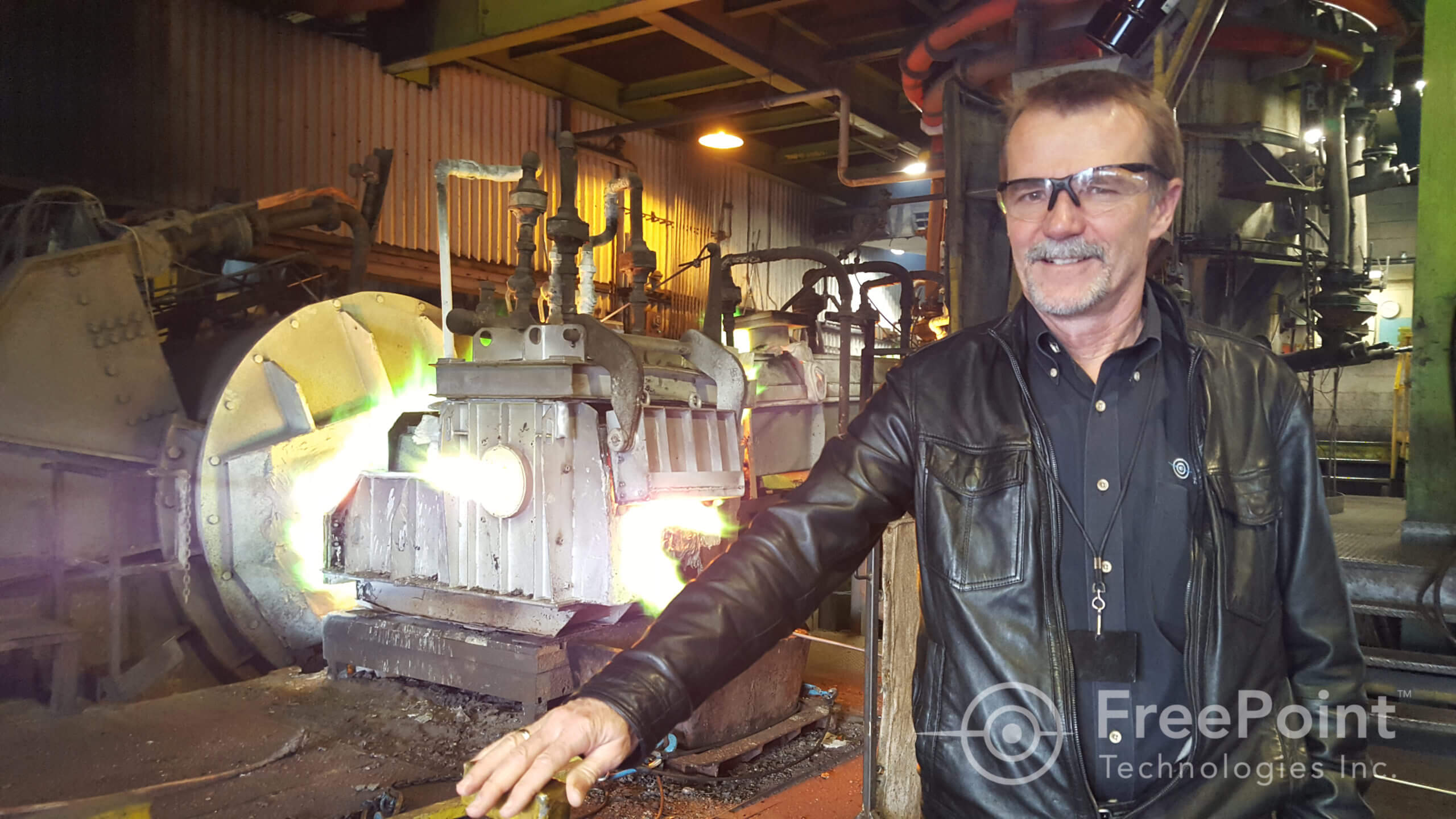
FreePoint Technologies
FreePoint Technologies (FreePoint) is a technology firm located in London, Ontario. Established in 2013, FreePoint helps industrial and manufacturing firms join the Industrial Internet of Things (IIOT) revolution. They do this with their unique, “machine wearable” technology that connects machinery to the cloud, allowing for simple collection and analysis of data on existing machinery.
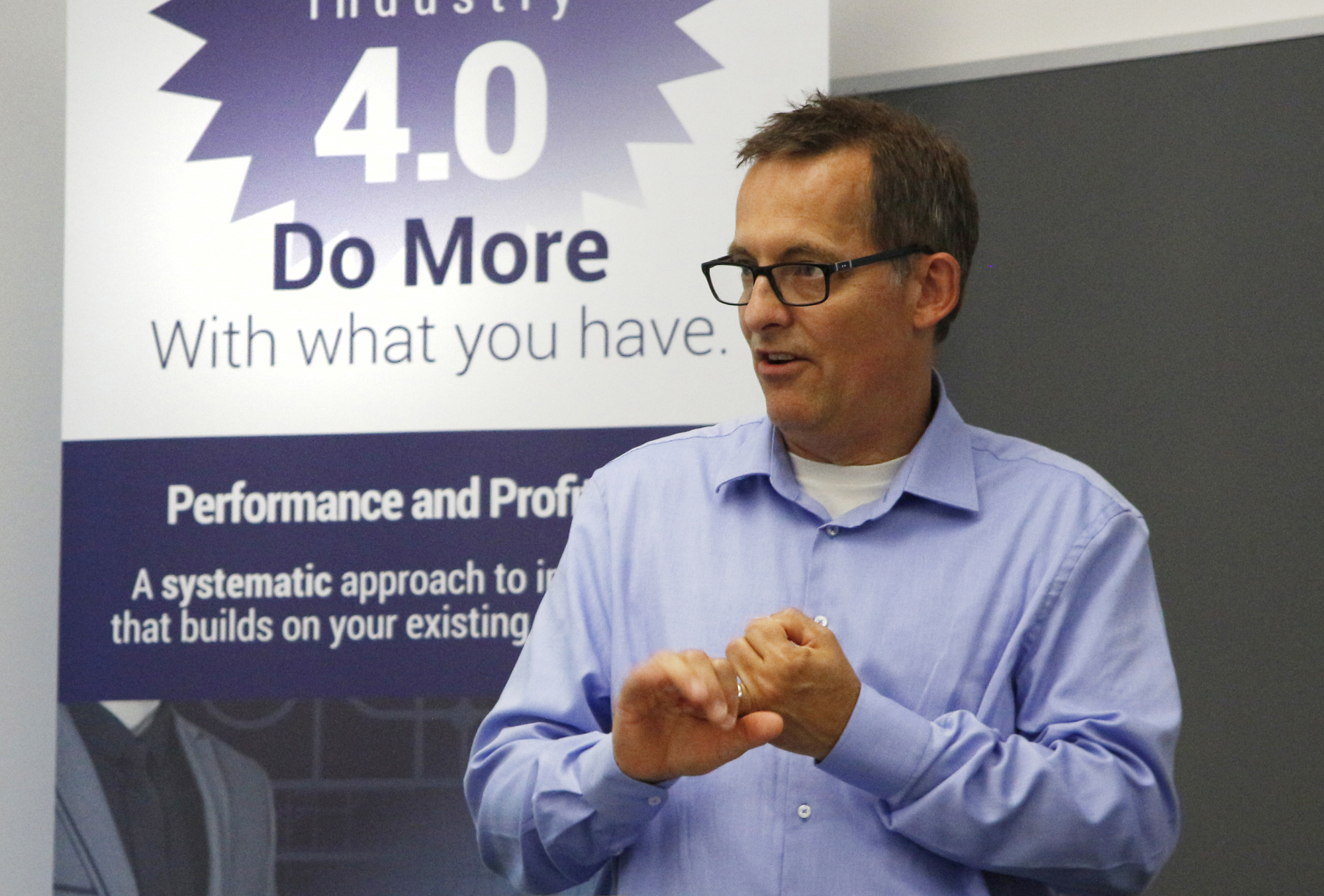
Circumference Technology Services
Circumference is a business and technology services company offering software engineering and performance solutions for small to mid-sized companies.
